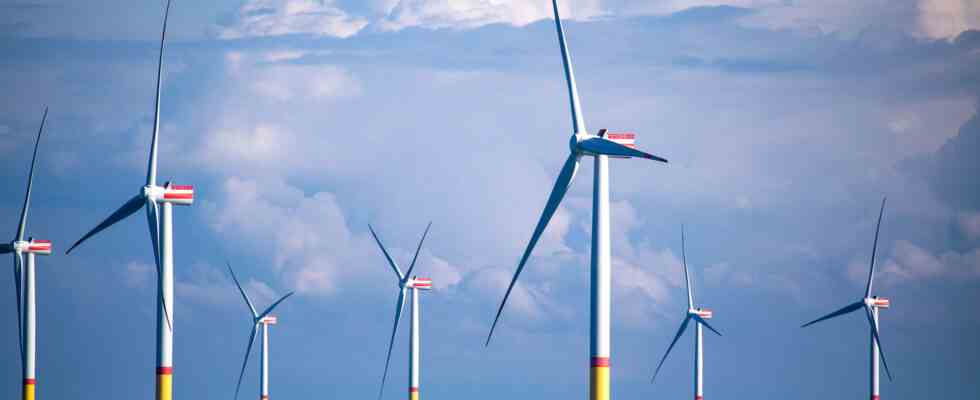Exclusive
Status: 03/03/2022 6:00 p.m
Renewable energies in Germany are to be expanded more quickly in order to end dependence on Russia. However, a new EU rule could follow this goal NDR/WDR research brake.
Andreas Gruber is proud of his bank’s green image. For the interview, the head of sustainability at Deutsche Kreditbank (DKB) virtually installed himself on a meadow with a windmill. But the wind turbine in its background will not contribute to the bank’s green balance sheet – just like the multi-billion dollar portfolio of loans that DKB has granted to wind power and solar projects.
Because the EU only rates loans as “green” if the company has more than 500 employees and is capital market-oriented, i.e. issues shares or bonds. This is what Article 8 of the Taxonomy Ordinance says. This could now lead to the expansion of renewable energies in Germany coming to a halt. If financial institutions are not allowed to label such loans as green, there are no incentives to provide favorable conditions for the expansion.
An internal presentation by the DKB shows what the regulation means in practice NDR, WDR and “Süddeutsche Zeitung”. A table lists customers who build large-scale wind or solar farms. For example, one of the borrowers has installed more than one gigawatt of capacity and has more than seven gigawatts planned. In total, this one customer’s projects could produce enough energy to replace at least eight conventional charcoal piles.
Windmill projects don’t count
Without a doubt, this meets the sustainability requirements set by the new taxonomy. This should direct financial flows to such projects and encourage banks to issue more green loans. The banks are supposed to be helped by the “green asset ratio” indicator, which they will soon have to report and which shows how green their loans are on the balance sheet. But these wind turbine projects of all things don’t count. For Gruber, this regulation calls into question the effectiveness of the taxonomy: it would only have a future “if it does what it was built for, namely to divert financial flows – and it doesn’t do that”.
The regulation affects the banks that traditionally finance green energy projects on a large scale in Germany – in addition to many savings banks and Volksbanks, there are also sustainability banks such as GLS. The GLS Bank had financed the first German wind turbine in the 1980s.
“Urgently in need of money for expansion”
A third of the loans now flow into wind and solar projects. Not a single one of them, says CEO Thomas Jorberg, he can count. Because behind many larger wind farms are project companies with only a few employees. External forces do most of the work. For the currently “urgently needed expansion of solar systems on Germany’s roofs” one is urgently dependent on the money now flowing in large style towards medium-sized companies.
For Andreas Hoepner, who advised the EU as a scientist on the development of the taxonomy, the rule is further evidence that taxonomy has evolved from a science-based project into a political issue. Hoepner describes the fact that banks are not allowed to count their loans to smaller wind and solar projects here as “not only not expedient, but even counterproductive”. He compares it to a football team that is allowed onto the pitch but their goals don’t count.
More favorable conditions not yet in sight
One of these players who are not yet allowed to shoot are Stadtwerke München. The municipal company will invest around ten billion euros in green electricity between 2008 and 2025, for example in solar thermal systems in Andalusia or a CO2-neutral district heating supply in Munich, says Sonja Schmutzer from Stadtwerke. The taxonomy should actually make financing cheaper. But: “Unfortunately, we don’t see any more favorable financing conditions at the moment,” says Schmutzer.
As is the case with many companies that invest in renewable energies, the public utilities do not meet all the criteria for the ‘Green Asset Ratio’ of the banks, for example they are not capital market oriented and therefore have to raise more money for the expansion.
When asked, the EU Commission explained that this regulation was chosen in order to keep the bureaucratic effort for small and medium-sized companies as low as possible. Loans from smaller and non-capital market-oriented companies may also be included in the calculation from 2025. Until then the problem remains.

